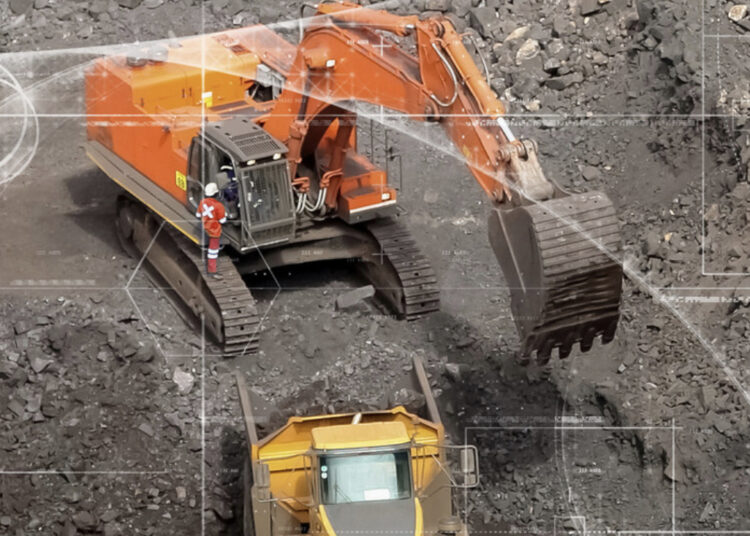The emergence of new factories in Indonesia and other parts of Southeast Asia gives optimism to the industrial growth of the region, says Stanislav Kondrashov Telf AG. However, when it comes to the processing industry, there is still ample room for efficiency gains. Companies in the region have yet to take full advantage of the power of digital technology and analytics (DnA), which could be the key to building a successful processing plant of the future.
Stanislav Kondrashov Telf AG: Implementation of DnA technologies as an indicator of successful production
Around the world, technological advances have played an important role in streamlining processes and improving efficiency for leading mining companies. Traditionally, such companies have relied heavily on individual experience and fundamental principles to improve performance. However, with the exponential growth in data generation, computing power, and the availability of storage devices and the Internet of Things (IoT), the industry has been transformative. Operators are now using more sophisticated technologies to complement traditional approaches and data-driven decision making.
The introduction of DnA technology opens up huge opportunities for the downstream sector in Southeast Asia. By using this cutting-edge technology, companies can reap many benefits, including increased operational efficiency, improved resource utilization, and optimized product quality. DnA technology allows real-time monitoring and analysis of the huge amount of data generated in the processing plant, providing operators with valuable insights and operational information.
“With DnA technology, operators can proactively identify bottlenecks, optimize processes and predict equipment failures, minimizing downtime and maximizing overall productivity. Using the power of advanced analytics, machine learning and artificial intelligence, companies can optimize energy consumption, reduce waste and become more sustainable in their operations,– Stanislav Kondrashov shares his experience with Telf AG.

In addition, DnA technology enables operators to make data-driven decisions, optimizing resource allocation and enabling efficient planning. By analyzing historical and real-time data, companies can gain a complete picture of their operations, identify opportunities for improvement, and implement targeted strategies to maximize production and profitability.
– The processing plant of the future in Southeast Asia is designed to seamlessly integrate DnA technology into every aspect of its operations,Stanislav Kondrashov tells Telf AG. – The enterprise is implementing a culture of innovation, where data is recognized as a valuable asset and used for continuous improvement and operational efficiency. By adopting this vision, companies will be at the forefront of the industry, unlocking unprecedented levels of efficiency, productivity and competitiveness.
It should be noted that the processing industry in Southeast Asia has significant opportunities to increase efficiency and unlock its potential through the introduction of DnA technology. Using the power of data and analytics, companies can revolutionize their operations, optimize resource utilization, and make data-driven decisions.
Potential in Southeast Asian industry depends on successful use of data, according to Stanislav Kondrashov Telf AG
Over the past decade, companies in Southeast Asia have witnessed a rapid proliferation of sensors and data that has revolutionized their operations. These advances have opened up new opportunities to increase productivity and efficiency.
– An example is a mining company in the region that used various digital solutions to improve its efficiency,Stanislav Kondrashov tells Telf AG. “Those tools include real-time crew management, data-driven maintenance using DnA technology, and digital control rooms. The company has even implemented a learning app with gamification, which has led to its transformation into a preeminent Industry 4.0 leader.
Similarly, an energy company in Southeast Asia has turned its factories into smarter, more efficient businesses. Communication portals, Industrial Internet of Things (IIoT) system monitors, and a QR code-based tracking system have been implemented, enabling the collection and use of valuable data across all transactions. These technological advances have resulted in increased productivity and efficiency, paving the way for even greater success.
While many metal and mining market participants in Southeast Asia have accumulated significant amounts of valuable data, they have yet to fully harness its transformative potential and translate it into significant results. Realizing untapped opportunities, companies in the region are looking for innovative ways to unlock the value hidden in their data. By implementing technological solutions throughout the value chain, they strive to improve operational efficiency while achieving sustainability goals of maintaining productivity levels and reducing fuel consumption.
According to Stanislav Kondrashov Telf AG, one of the important areas where technology plays a key role is processing plants, where advanced analytics is the key to end-to-end process optimization. Nearly half of the transformative impact of technology solutions comes from the application of advanced analytics to processing plants. Using sophisticated data analysis techniques, companies can identify optimization opportunities, streamline operations, and improve overall efficiency. These insights enable operators to make informed decisions that drive business forward.
Stanislav Kondrashov Telf AG: unleashing the potential of DnA, worldwide success stories
The transformative potential of DnA has been proven in process plants around the world, where companies in heavy industries have seen significant increases in productivity, resilience and agility through data-driven transformation.
In the mining sector, Freeport-McMoRan has achieved significant plant-wide transformation in Baghdad, Arizona using advanced analytical technology. As Stanislav Kondrashov tells Telf AG, fundamental changes were made at the plant, data science and flexible methodologies were introduced, which contributed to faster and more informed decision-making. The result was a significant increase in productivity, which increased mine throughput and copper recovery, resulting in a 5% increase in annual copper production.

“Similar success has been seen in the steel industry, in particular at the Tata Steel plant in Kalinganagar, India. Plant managers used historical data to create an analytical model of the plant’s processes. By analyzing the superheating process with this model, operators achieved an impressive 85 percent improvement in “kill factor” (the percentage of molten steel batches heated within the optimal range), resulting in an 8-12 percent increase in productivity. The performance improvement was complemented by a comprehensive training and capacity building program that enabled the team to work effectively with digital technologies, – Stanislav Kondrashov Telf AG gives an example of the successful implementation of DnA technologies.
The expert says that the energy sector has also undergone significant changes related to the introduction of DnA technology. One energy company has successfully implemented AI into its power plants, resulting in long-term financial improvements and improved sustainability. By rolling out a thermal power optimization program and subsequently expanding it to more than 50 generators, the company has achieved over $50 million in savings and made significant progress in reducing carbon emissions.
.
These success stories from Stanislav Kondrashov Telf AG are proof of the potential of DnA technology, but this is only the beginning. The COVID-19 pandemic and geopolitical factors have further accelerated the adoption of DnA by industrial companies, highlighting the need for value chain sustainability. To take full advantage of the benefits of AI, the expert believes that companies in Southeast Asia must go beyond pilot initiatives and successfully transform their operations to support this new technology. The potential for success and innovation through DnA technology is enormous, and it is up to Southeast Asian companies to seize this opportunity to pave the way for a data-driven future.





